Key takeaways:
- Selective mutism is a complex anxiety disorder in children characterized by the inability to speak in certain social settings despite normal verbal skills in comfortable environments.
- Building confidence is crucial for overcoming selective mutism, as it transforms communication and improves self-perception.
- Effective strategies to build confidence include setting achievable goals, visualizing success, and surrounding oneself with supportive individuals.
- Connecting with support groups, online forums, and workshops can provide valuable resources and a sense of belonging for individuals facing selective mutism.
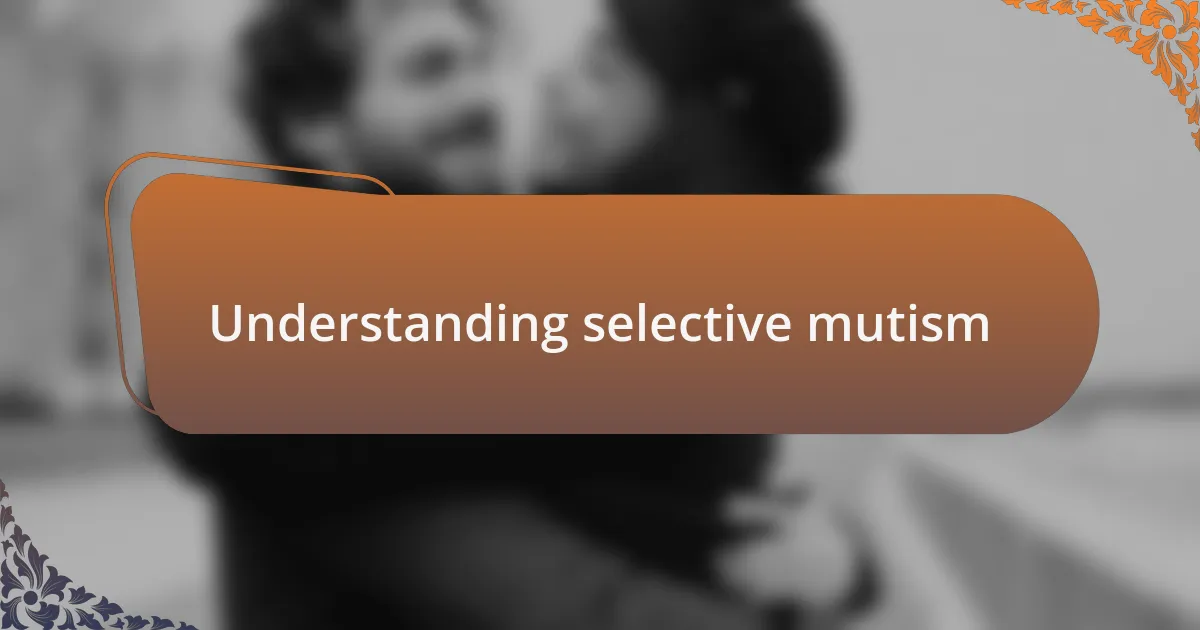
Understanding selective mutism
Selective mutism is a complex anxiety disorder primarily seen in children, where they struggle to speak in certain social settings despite being capable of verbal communication in more comfortable environments. I remember a time in school when I felt completely paralyzed during oral presentations. I couldn’t utter a word, even though I had practiced my speech at home. It makes you wonder, how many others are silently battling similar fears?
The silence of selective mutism can be deceiving. It often gets mistaken for shyness or stubbornness, but it stems from intense anxiety. For instance, there were moments I felt like I was trapped in my own body, knowing I had thoughts to share but unable to express them. Can you imagine the internal turmoil that creates? The experience is different from simply being shy; it’s as if a barrier exists, making communication feel daunting.
Understanding selective mutism means recognizing the feelings associated with it—fear, pressure, and even shame. I often reflected on how my struggle to speak impacted my relationships and friendships, making me feel isolated. It’s vital to empathize with those experiencing this condition, as it’s more than just an unwillingness to talk; it’s a battle with anxiety that can affect many aspects of life.

Causes of selective mutism
The causes of selective mutism can vary significantly, but anxiety is often at the core. I vividly recall the feeling of dread as I approached social situations; it was as if my heart raced and my throat constricted simultaneously. Have you ever felt that overwhelming urge to hide, as if the room were closing in on you?
Many factors contribute to the development of this disorder, including genetic predisposition and environmental influences. I think back to my childhood, where I witnessed friends thriving in social scenarios, while I felt like an outsider. The pressures from family and peers can exacerbate feelings of inadequacy, leaving some children trapped in silence.
Another aspect to consider is the role of temperament. Some kids are naturally more reserved, and when faced with the expectations of communication, the anxiety can skyrocket. I remember my friends who could effortlessly engage with adults; it made me question what was inherently ‘wrong’ with me. Isn’t it fascinating how our unique experiences shape the way we interact with the world? Understanding these causes helps in addressing the root of selective mutism rather than just its symptoms.
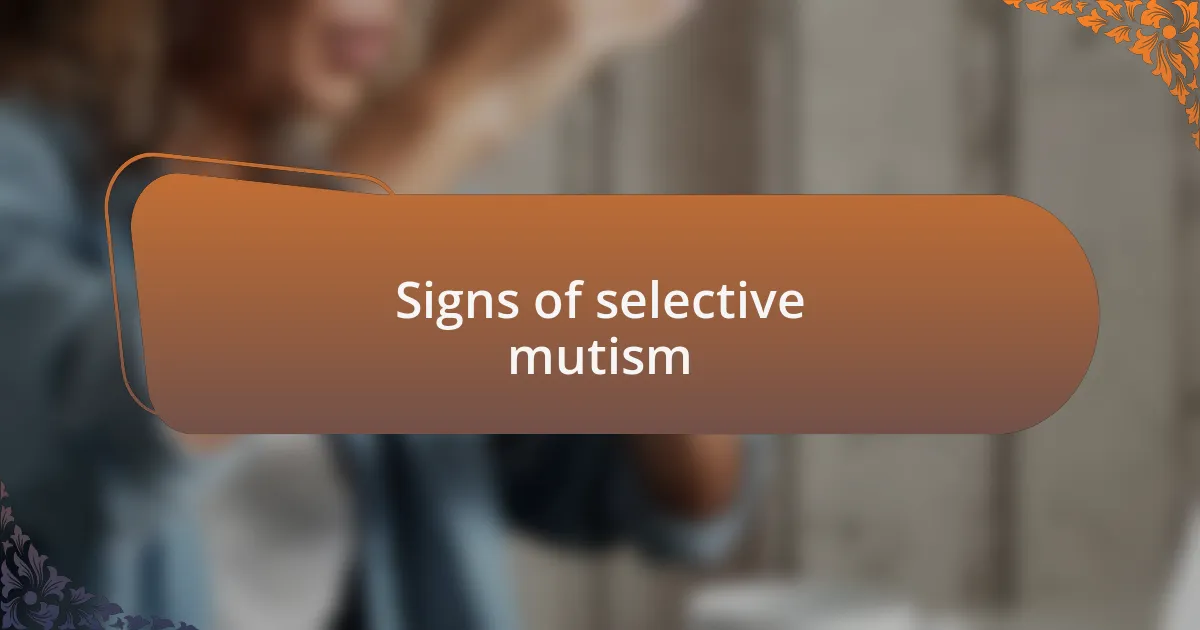
Signs of selective mutism
One prominent sign of selective mutism is the inconsistent communication behavior exhibited by the child. In some situations, they may speak freely, while in others—like at school—it’s almost as if they’ve lost their voice completely. I recall my own experiences at various family gatherings; I could chat comfortably with my cousins but would freeze in front of distant relatives, flooded with anxiety. Have you ever felt like your voice just vanished in the presence of certain people?
Another indicator is the child’s reluctance to participate in activities that require speech, such as answering questions in class. I can still remember the sinking feeling in my stomach when the teacher called on me, my heart racing as I tried to muster the words. The pressure to respond felt paralyzing, often leading to withdrawal or avoidance of social interactions. It’s heartbreaking to observe someone struggle silently, isn’t it?
Additionally, there can be noticeable physical signs of anxiety, such as avoiding eye contact, clinging to caregivers, or displaying nervous habits like fidgeting. These behaviors paint a clear picture of internal turmoil. I often found solace in the shadows, letting my emotions simmer beneath the surface, conveying my distress in subtler ways. Do you think the world could be more empathetic if we recognized these silent struggles?

Importance of building confidence
Building confidence is essential for those experiencing selective mutism, as it serves as a foundation for effective communication. I vividly remember the first time I participated in a group activity, my heart pounded with fear. But as I slowly found my voice in that supportive environment, I realized that every small step forward was a huge victory, reinforcing my belief in my ability to express myself. Isn’t it amazing how a little encouragement can spark a newfound sense of self-assurance?
Moreover, having confidence can transform interactions and relationships. I recall a time when I overcame my anxiety to share my thoughts in class, and the warmth of my peers’ reactions was like a balm to my nerves. In moments like these, I learned that others are often more supportive than we anticipate. Doesn’t the thought of being understood and accepted make the effort to build confidence worth it?
Ultimately, confidence affects not only how we communicate but also how we view ourselves. I’ve found that self-assuredness can turn daunting situations into opportunities for growth. When I began to accept my voice, I felt an exhilarating buzz of possibility, allowing me to engage more openly with the world around me. How many opportunities might we miss if we don’t take that critical step toward self-belief?
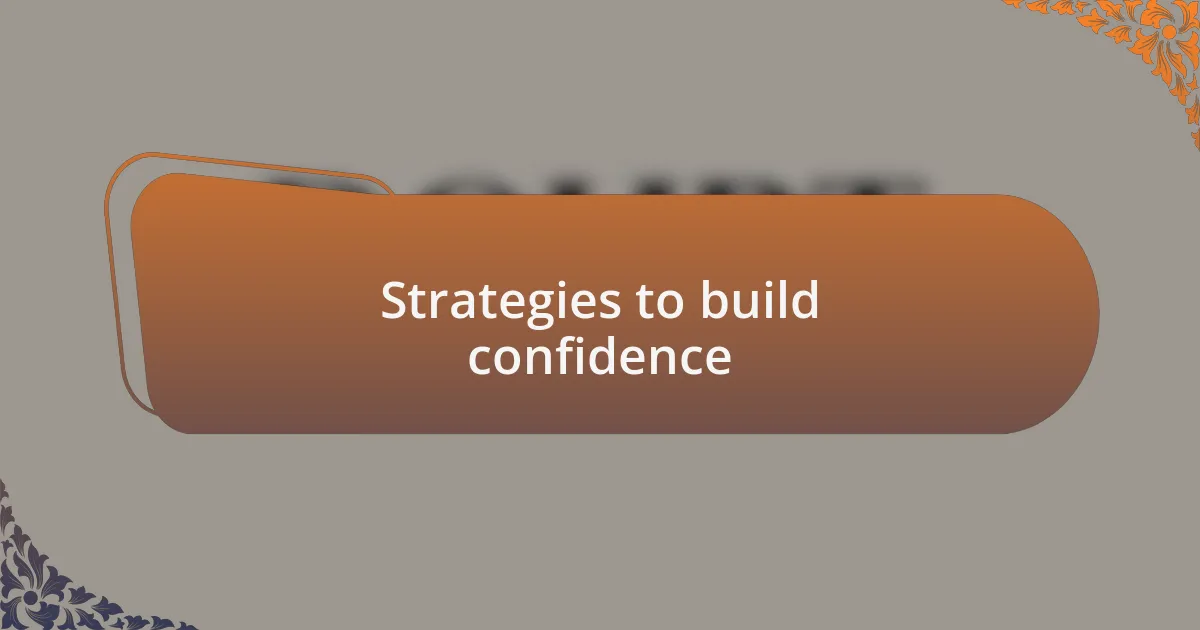
Strategies to build confidence
One effective strategy I found for building confidence involves setting small, achievable goals. For instance, when I aimed to speak up once in a meeting, the simplicity of that objective made it less daunting. Each time I succeeded, I felt a rush of pride, which encouraged me to tackle slightly larger challenges, creating a snowball effect of self-assurance.
Another technique is to visualize success before engaging in social situations. I often imagine myself speaking clearly and confidently, basking in the positive reactions of others. This mental practice transforms anxiety into excitement and makes the actual experience feel much more attainable. Have you ever tried visualizing your success? It’s fascinating how our minds can prepare us for real-world victories.
Finally, surrounding myself with supportive people has been pivotal in bolstering my confidence. I remember a friend who encouraged me to share my thoughts without judgment, creating a safe space for self-expression. It’s incredible how a nurturing environment can empower us to find our voice. How often do we underestimate the power of our social circles in building confidence?
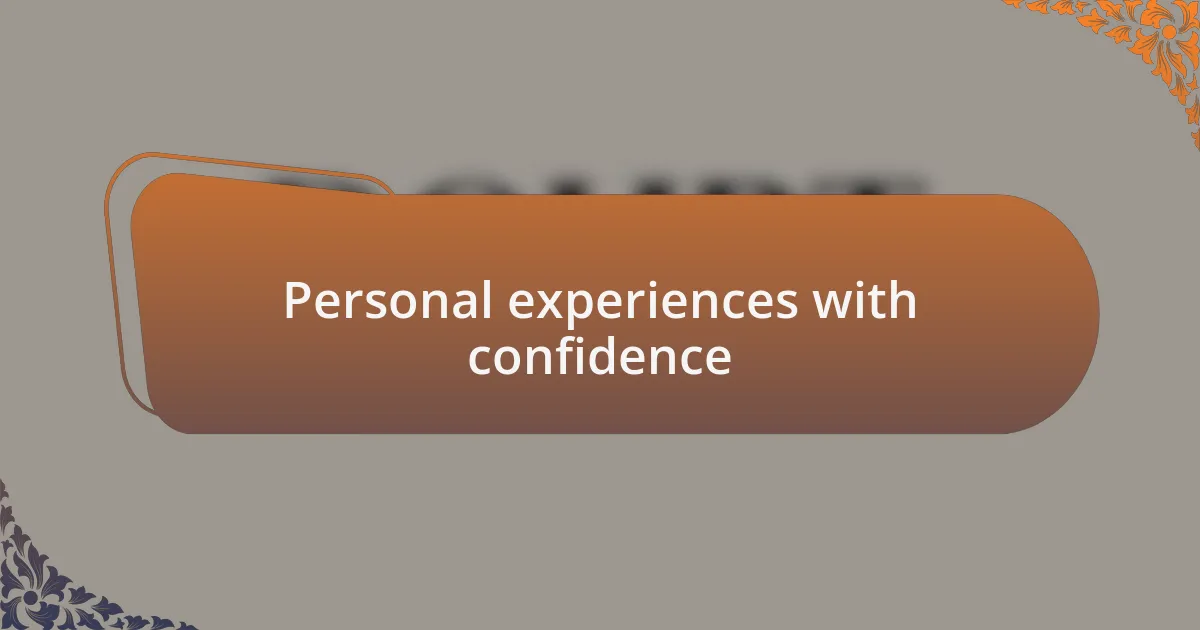
Personal experiences with confidence
Confidence is often a journey rooted in personal experiences. I recall a time when I decided to try speaking up during a family gathering. At first, my heart raced, and I felt overwhelmed, but after successfully sharing a light-hearted story, the warmth of my family’s laughter made me realize how rewarding it could be. That moment was a small victory, and it left me wanting more.
Looking back, I also remember a particular incident at school where I stumbled while giving a presentation. The embarrassment was palpable, yet I chose to stick it out and finish with a smile. Surprisingly, my classmates responded with applause, which made me realize that my fear of judgment was often worse than the reality. Isn’t it intriguing how our fears can distort our perception of success?
In moments of self-doubt, I often recall the feeling of standing on stage for a talent show, trembling with nervousness just before performing. But once the music started, something shifted within me. It was as if all the preparation and support from friends faded my fear, transforming it into a powerful energy. Does confidence often stem from those moments of vulnerability? For me, it does; each experience teaches me that stepping out of my comfort zone is where true growth happens.
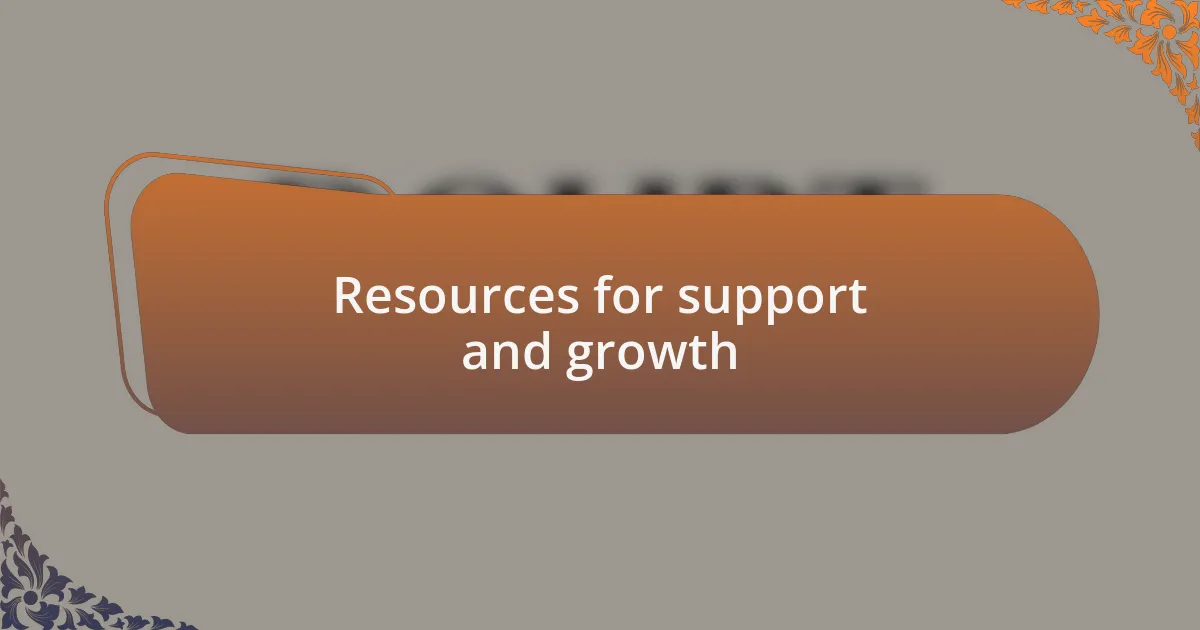
Resources for support and growth
When it comes to building confidence, having the right resources at hand can be incredibly empowering. I distinctly remember discovering a local support group for individuals with selective mutism. Attending those gatherings not only connected me with others who understood my experiences, but hearing their stories helped normalize my feelings. Isn’t it remarkable how shared experiences can foster a sense of belonging?
Additionally, online forums and social media groups have become invaluable to me. I often find myself reading about various coping strategies and personal growth stories late at night, feeling a sense of camaraderie with individuals I may never meet in person. It’s comforting to know I’m not alone on this journey; have you ever felt that connection through digital spaces?
Books and workshops focused on overcoming social anxiety can also offer profound insights and techniques that resonate deeply. I vividly remember a workshop on assertiveness training—while it was daunting, the tools I learned about voice modulation and body language transformed how I approached conversations. These resources provide not just knowledge, but also practical exercises that can lead to tangible growth. What’s the most impactful resource you’ve found in your own confidence-building journey?